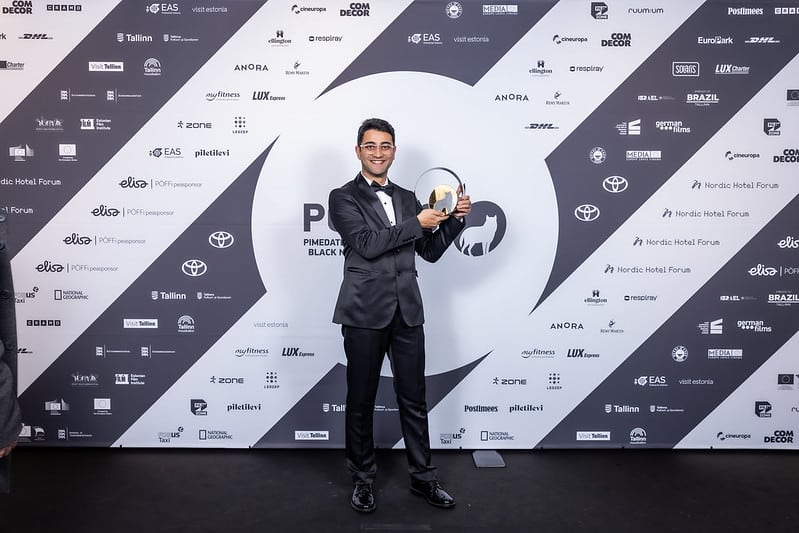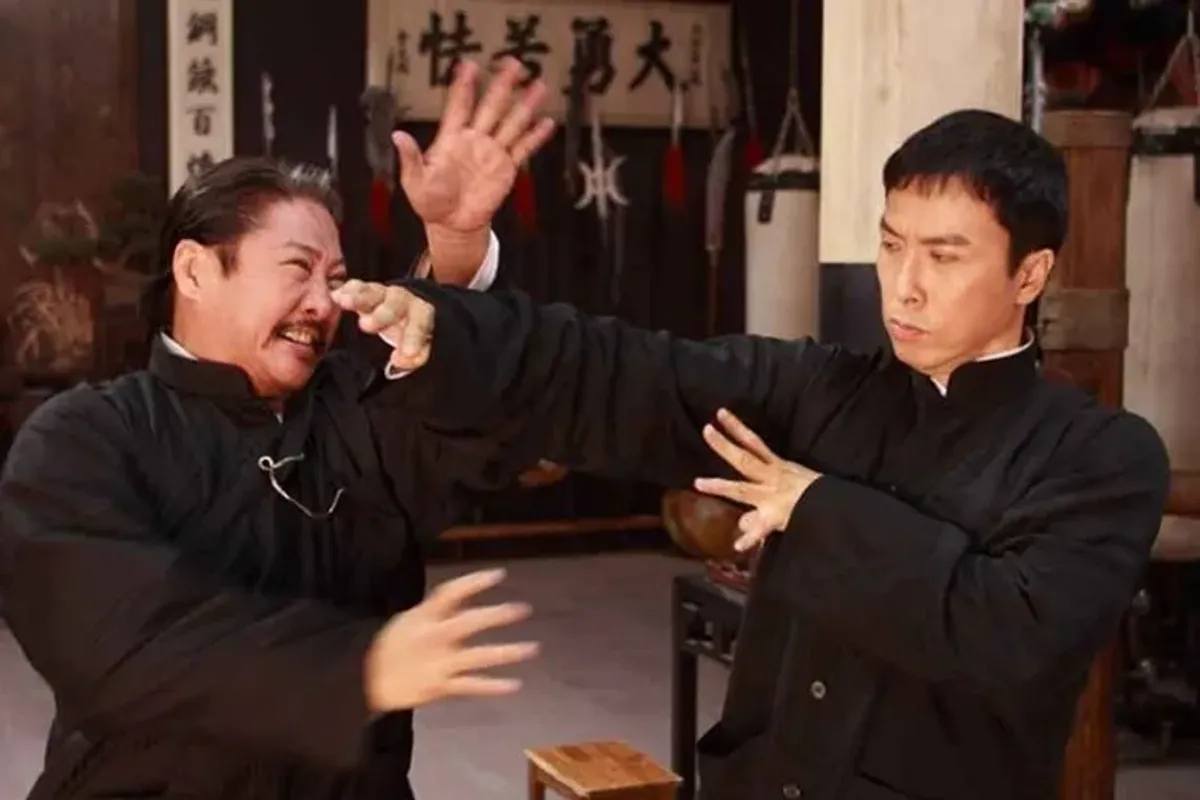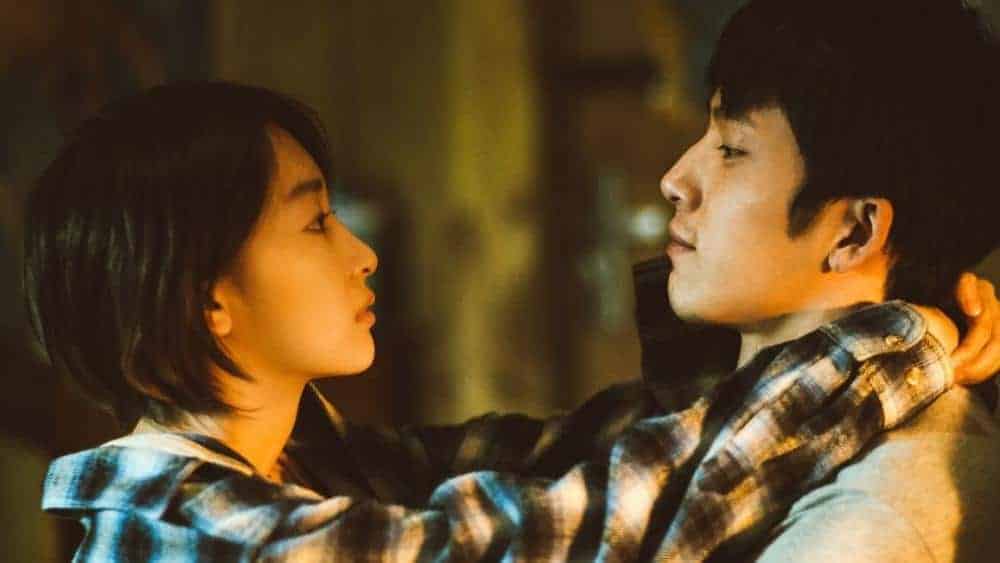This year, the jury of the First Feature Competition has decided to hand out two Special Jury Prizes, the first of which was given to the Croatian director Filip Heraković for his film “Pelican”. The second went to Siddharth Chauhan's “Amar Colony” ‘for originality of vision'. In their statement, the jury comprising of Sebastian Meise, Pippa Cross, Therese Malvar, Jean des Forêts, and Michael Idov explained their decision with the following words: “This film delighted us with a bold and innovative presentation of a small town community whose frank sensuality and unabashed pursuit of urges, both human and divine, are set against the resonant backdrop of a culturally rich and deeply personal setting. The director daringly takes us by the hand and leads us on a journey to his world, introducing us to his characters and their lives with affection and often with humor.”
Siddharth Chauhan takes us on a special journey indeed. His storytelling is daring, picturesque and inhabited by characters bursting with life energy. It is also taboo-breaking in many ways. A pregnant woman has an affair with a neighbour, and her husband leads a second, unclosetted life. We got to see their secret outings, and we do not just listen to their heart desires, we observe them indulging in them. An elderly woman speaks about sexuality that ‘doesn't ebb away with age'. “Amar Colony” is a fresh, modern Indian tale about people who long to free themselves from the preassure of societal expectations.
We sat to talk with Chauhan on the day of the Award Ceremony in Hotel Nordic. He was completely sure that his film hasn't won anything, because ‘he didn't get that call'. We at AMP are very happy that he was proven wrong.

First of all, it would be interesting to understand the concept of the colony itself
This title is actually inspired by a building which is very close to where I live in my hometown, in Shimla. There are these buildings with tiny residential apartements where usually people from the working class are squeezed in. We are literally talking about one room apartmenets very typical of Mumbai and Delhi. I used to stay in the hills, and Shimla had a much better version of such apartments in buildings typical for the colonial architecture which were not one-room, but 2-3 room with long corridors, big windows, amazing wooden architecture, and of the type you saw in the film. So, I found such a building which resembled of what I know from Chaul city. I thought, how about making a film about this building, and telling stories about its inhabitans. Another angle was that I made a short called “Papa” in 2015, and my present film happens to be an extended version of the wheelchair-bound lady with pidgeons and her son. While I was working on that short, and was looking for locations, I found a delapidated floor of a wooden building where the interiors were almost intact. We had to redo them, but the structure was in place. Since I shot my short in one of those rooms, after leaving the set when the film was completed I was thinking: “How would it be like telling more stories behind the other closed doors?” Of course, I didn't want to expand the idea to 10 closed doors, and since one was already there, the most logical follow up for me was to include a maximum of three more. That's how I came up with this idea.
The plot involves diverse stories and destinies intertwined. How did you come up with such an insanly diversified universe of characters?
I had one story already in place. I just wanted to add a couple of more dimensions. Thematically, the original story has isolation in its core, so when I started working on the additional characters, I wanted to keep that element. Although all of them would be different, I wanted to keep them somehow caged, seeking something to fill the void. There was also a possibilty that it would turn into a very boring film, so I had to come up with unusually interesting characters. I think that I just tried to entertain myself, so I had to ask inner questions about what I would want to see when entering such a building, and what kind of stories would be the most intriguing. I imagined the people living there in one place that I wanted to explore.
Those genre-esque, surreal elements serve to connect different types of characters.
I felt that each of them were suffering. Their lives are not comfortable, they are not fulfilling in any way. They are all hungry for life and seeking for something. While I was exploring those feelings, I also wanted to enter the space of their imagination, because for me, that is the most interesting thing. I may be living in a small apartment, but when I close my eyes, my imagination can take me anywhere. Imagination can take you to fantastic places. So, when I developed my characters, I knew that their lives were hard but also that it should be some kind of contrast which, again, would be in their imagination.
The atmosphere surrounding the house is very eerie, and I would like to know why you wanted to make it somehow threatening.
It's just like in real life. There is a huge contrast between the comfort of one's home and the outside world. When I was working on those characters, I particularly wanted to be in a certain way, to be ‘ inside'. They all knew each other, they spoke on a daily basis, they knew everything even if they didn't talk about it. They pretended not to know about many things. At the same time, you never know to which extent they really know about each other, their real selves, their inner desires. Outside for me was the realm that was very much in contrast to their inside world. I wanted to establish the sense of security of that inner space which was also very lonely.
There was something really special about the framing, the positioning of the camera, and it differed from room to room. Also the choise of the colour palette changed from apartment to apartment.
It's almost like being in a theatre. The camera barely moves, because I thought that the still frames add calmness to the rhythm of the story I wanted to tell. At the same time, I felt that when you use such a language it helps the audience to enter that realm easier. I am not trying to manipulate the viewer with the use of particular angles, I just want to sit and observe what is happening in my character's lives, rather than circling aroung them and having shaky shots. So, I simply found that camera language the best.

You don't seem to be very much influenced by the Indian film tradition. Your characters are modern, and they express themselves in clear words.
I wanted the people to be themselves and to show that although they are conservative and they all live in a society with clear rules about do's and dont's which they seemingly follow, when they are in Amar Colony – they don't. They unhesitatingly talk about the things they want to talk about, and sex is something quite interesting as a topic. That's why they needed a private space in which they could talk about it. I really wanted to show the opression of sexes.
Also, there is no music that manipulates emotions.
Yes. I used music only in two places in the film, but not in order to enhance the values of the scene or to amplify the emotion, because I was very confident to use it in a different way.
How does it feel like competing at PÖFF?
I didn't expect that because it's my debut film. I know that this happens to be one of the top A-list festivals in the world, so it's and honor. I am not taking the competiiton too seriously, although I am aware of the significance of the awards. You can never really compare films to each other, so that is something secondary to me.
What I immediately noticed in “Amar Colony” was the set design and the use of colours which are livid, and very much different for every household.
My colour palette was very much discussed with the production designer Avyakta Kapur who was behind the look of Shubhashish Bhutiani's “Mukti Bhawan” (2017), and I was very happy to collaborate with her. When she came on board, we had a lot of discussions. We agreed on a colourful setting, but at the same time, we wanted to give some definite colours to each story. For example, it was mustard orange and red for the elderly lady, it was a lot of purple for the pregnant Mira, and the blue & green for the son with disabled mother, because I thought that those colours were enhancing their emotions. Actually, I wanted to have brown shades for the son and mother, but Avyakta gave me a flat ‘no'. We had some pretty similar visions about the look of the film. She suggested the previously mentioned combination because that lady's room looked like a cage, and the green added a dream-like dimension to it. I also depended a lot on her, so I finally said: “Ok, if I have a problem with something I will let you know.” Also, my cinematographer Modhura Palit did an amazing job. I personally believe that my relationship with artists working on the film changed the story. In my last film, my DoP didn't have any liberty in deciding about any shot, but in this film I wanted to hear what she had to say. I would ask her: ” So, tell me, how would you see that?” I needed to hear women's opinions on what I wanted to show in the movie. I also think that inherently in the script I also had a very feminine gaze. There were also some places that I couldn't come up with anything, so I relied on Kapur.

Quite exciting are the angular shots.
We made rules for each story. For example, for the old lady we only used wide shots, and no camera movement. We didn't mind cutting a lot. In case of Mira's story (the pregnant young woman) we knew that in each frame either she'd move, or the camera would, because she was the one calling the shots. We had some rules.
I would like to address the taboo-breaking elements of your film. There is some sex talk and also a couple of sex scenes – not of explicit nature, but still unusually daring for Indian cinema. Was it difficult to produce the film with such a content and over 50% of female film professionals on board?
I was very lucky to have Nisheet Kumar as the producer who believed in me. He gave me all the liberty to make the movie the way I wanted to. Also, I personally prefer not to think about how the audience would react and feel, and just want to be as honest and truthful to the story as possible. I was very excited about the fact that I was going to be telling a story about the sexuality of a pregnant woman. I have never seen a pregnant woman having sex in an Indian movie. That was a thrilling thing for me, but also for my producer and co-producers. We did ask ourselves if some of the things were too bold for Indian cinema and we were aware of what we were doing, at the same time we were also conscious of the fact that our story telling would be honest. Eventually, it turned original. We don't mind if people get taken aback, so we are prepaired.
Considering everything, it must have been very difficult to find the cast.
Our casting process lasted for almost three months. Also, I am based in a small town, which means that there are not many professional actors where I live. We made sure that we had a proper casting process across cities. We had applications coming from everywhere. I was not putting any special conditions in terms of professional/ amateur, experience/ no experience, and by the way the Monkey Gods devotee was played by Usha who stood in front of the camera for the first time in her lfie.She is not an actress, but she is amazing. It's not that everything is decided in my head, but there are things I instantly know, like who's fitting for the role and who isn't. When I do an audition, it takes me 5 seconds to make a decision about an actor. I make sure that there is not too much space for improvisations. At the same time, I like to leave things very open, and I make sure that the atmosphere is right even when I am very particular about what I want. I don't become loud, and I try to make people feel comfortable. In a way, I wouldn't want to be that person who believes to know the best. I often ask my actors if they are fine with a line, with a scene, with an interpretation. So, I'd ask them: “What would you do in my place?”
















